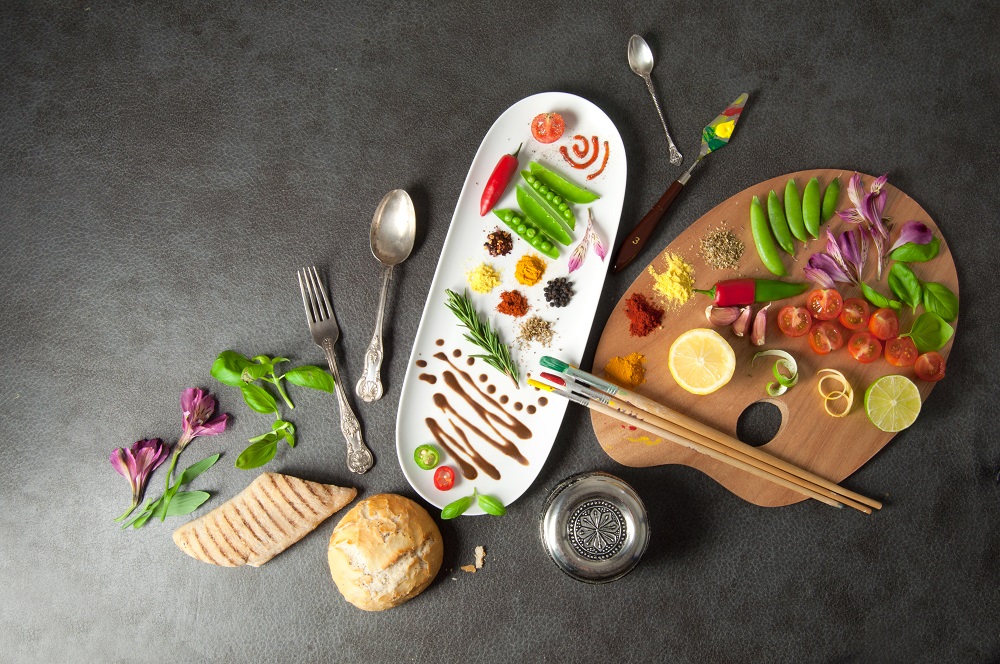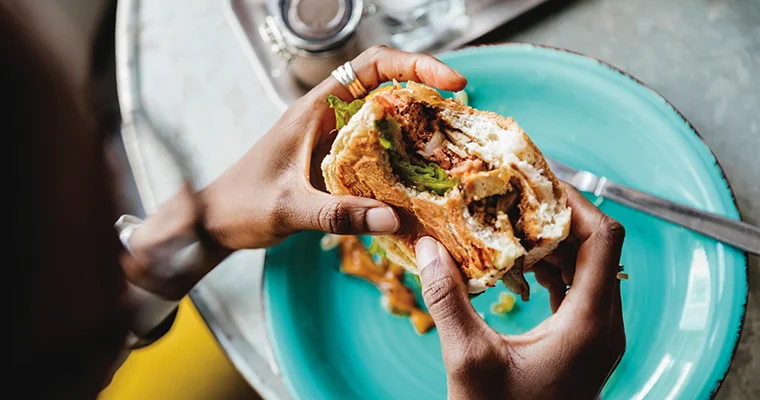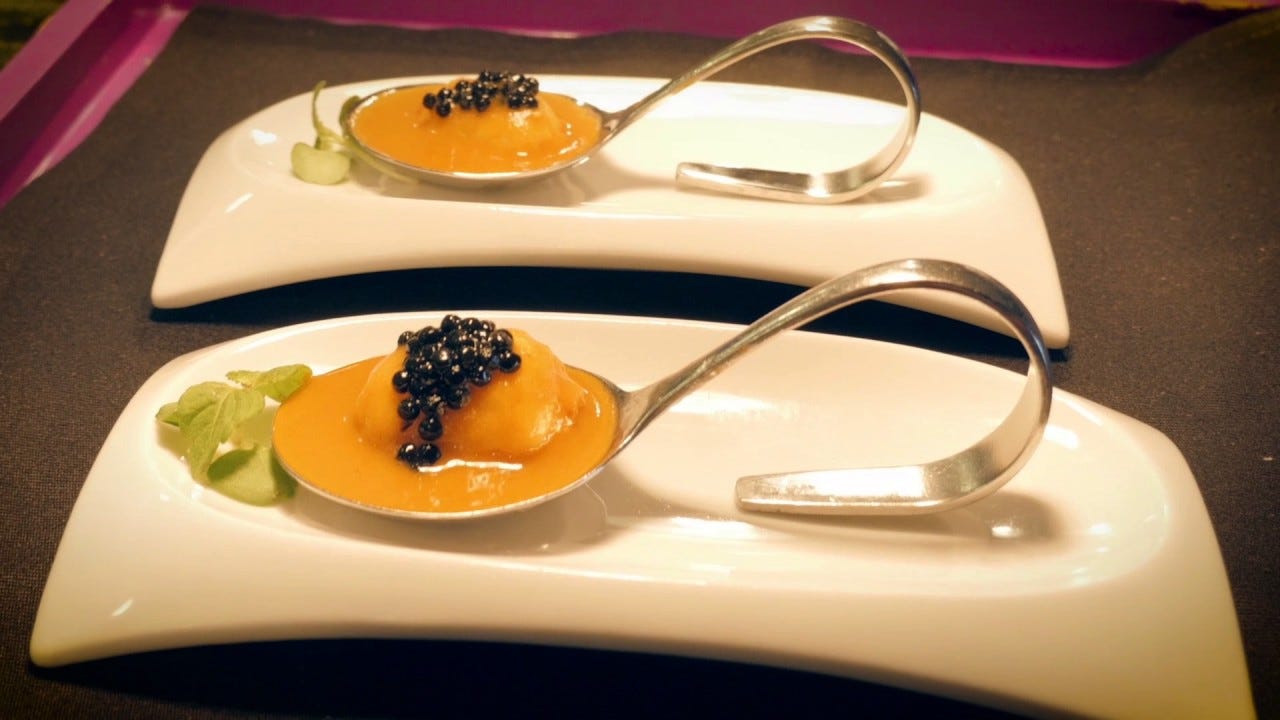Culinary creativity is the driving force behind the evolution of cuisine, transforming simple ingredients into extraordinary dishes that delight the senses and push the boundaries of taste. This artistic expression in the kitchen involves a blend of imagination, skill, and innovation, allowing chefs and home cooks alike to craft unique culinary experiences. In this article, we delve into the essence of culinary creativity, its importance, and how it shapes the world of food.

The Essence of Culinary Creativity
Definition and Scope
Culinary creativity encompasses the inventive and artistic aspects of cooking. It involves experimenting with flavors, textures, and presentation to create new and exciting dishes. This creative process can include:
- Ingredient Innovation: Using unconventional ingredients or combining familiar ones in novel ways.
- Technique Exploration: Employing traditional cooking methods with a twist or integrating cutting-edge culinary techniques.
- Presentation Mastery: Focusing on the visual appeal of dishes, making food not only taste good but look stunning.
Historical Context
Culinary creativity is not a modern phenomenon; it has roots in ancient civilizations where cooks would experiment with spices, preservation methods, and presentation to please the palate and the eye. Over the centuries, culinary traditions have evolved, influenced by cultural exchanges, technological advancements, and changing societal preferences.
Importance of Culinary Creativity
Innovation and Evolution
Culinary Progress: Creativity in the kitchen drives the evolution of cuisine, leading to the development of new dishes, cooking techniques, and dining experiences. This constant innovation keeps the culinary world dynamic and exciting.
Cultural Fusion: Creative culinary practices often involve blending elements from different cultures, resulting in fusion cuisine. This not only broadens the range of flavors and dishes available but also fosters cultural appreciation and exchange.
Enhancing the Dining Experience
Sensory Delight: Creative dishes engage all the senses, offering a richer and more memorable dining experience. Innovative flavor combinations, textures, and presentations can transform a meal into an unforgettable event.
Personal Expression: For chefs and home cooks, culinary creativity is a form of personal expression. It allows them to showcase their skills, share their stories, and convey emotions through their dishes.
Examples of Culinary Creativity
Innovative Ingredients
- Molecular Gastronomy: This branch of food science explores the physical and chemical transformations of ingredients during cooking. Techniques like spherification, foaming, and gelification create novel textures and flavors.
- Plant-Based Innovations: The rise of plant-based diets has spurred creativity in using vegetables, legumes, and grains to create dishes that mimic the taste and texture of meat-based recipes.
Creative Techniques
- Sous Vide Cooking: This technique involves cooking food in vacuum-sealed bags at precise, low temperatures, resulting in perfectly cooked and flavorful dishes.
- Deconstruction: This approach deconstructs traditional dishes into their individual components, presenting them in new and surprising ways while maintaining the original flavors.
Artistic Presentation
- Plating Techniques: Chefs use various plating techniques to enhance the visual appeal of their dishes, from minimalist designs to elaborate constructions.
- Edible Art: Some chefs create dishes that resemble art pieces, using ingredients as their medium to craft visually stunning and edible masterpieces.
Challenges and Considerations
Balancing Creativity and Practicality
- Feasibility: While creativity is essential, it must be balanced with practicality, especially in professional kitchens. Chefs need to consider factors such as ingredient availability, cost, and the time required for preparation.
- Audience Preferences: Creative dishes should cater to the preferences and dietary needs of the intended audience. It’s important to innovate without alienating diners who may prefer more traditional flavors.
Preserving Tradition
- Respecting Heritage: While pushing culinary boundaries is important, it’s equally crucial to respect and preserve culinary traditions. Many chefs find ways to innovate while honoring the essence of classic dishes.
- Sustainable Practices: Culinary creativity should also consider sustainability, using local and seasonal ingredients, minimizing waste, and supporting ethical food practices.
Culinary creativity is a powerful force that shapes the way we experience food. It blends innovation with tradition, turning cooking into an art form that delights the senses and enriches our cultural tapestry. Whether through innovative ingredients, creative techniques, or artistic presentation, culinary creativity inspires chefs and home cooks to explore new possibilities in the kitchen. By embracing this spirit of innovation, we can continue to push the boundaries of what is possible in the culinary world, creating dishes that are not only delicious but also expressive and meaningful.
Pros and Cons of Culinary Creativity: Balancing Innovation with Practicality
Culinary creativity is the spark that ignites innovation in the kitchen, transforming everyday ingredients into extraordinary dishes. It allows chefs and home cooks to push boundaries, experiment with flavors, and create memorable dining experiences. However, like any form of creativity, it comes with both advantages and potential drawbacks. In this article, we explore the pros and cons of culinary creativity, shedding light on its impact on the culinary world and our dining experiences.

Advantages
1. Innovation and Evolution
Pushing Boundaries: Culinary creativity encourages the hometogel exploration of new techniques, ingredients, and combinations, leading to the development of novel dishes and cooking methods. This continuous innovation keeps the culinary world vibrant and dynamic.
Cultural Fusion: Creative culinary practices often blend elements from various cultures, resulting in fusion cuisine. This not only broadens the range of flavors and dishes available but also promotes cultural exchange and understanding.
2. Enhanced Dining Experience
Sensory Delight: Creative dishes engage all the senses, offering a richer and more memorable dining experience. Unique flavor combinations, textures, and presentations can elevate a meal from ordinary to extraordinary.
Visual Appeal: Artistic presentation is a key aspect of culinary creativity. Beautifully plated dishes enhance the visual experience, making dining a feast for the eyes as well as the palate.
3. Personal Expression
Showcasing Talent: For chefs, culinary creativity is a platform to showcase their skills, innovation, and personal style. It allows them to express their identity and culinary philosophy through their dishes.
Storytelling: Creative cooking can convey stories and emotions, connecting diners to the chef’s journey and experiences. This personal touch adds depth to the dining experience.
4. Meeting Diverse Dietary Needs
Dietary Innovation: Culinary creativity can lead to the development of new recipes and dishes that cater to diverse dietary needs and preferences, such as vegetarian, vegan, gluten-free, and allergen-free options. This inclusivity ensures that more people can enjoy culinary delights.
Disadvantages
1. Complexity and Feasibility
Technical Challenges: Creative dishes often require advanced techniques, specialized equipment, and meticulous preparation. This complexity can be daunting for home cooks and may not always be feasible in busy restaurant kitchens.
Ingredient Availability: Innovative recipes may call for rare or seasonal ingredients that are not always readily available. This can limit the ability to replicate creative dishes consistently.
2. Risk of Overcomplication
Overdoing It: There is a risk of overcomplicating dishes in the pursuit of creativity, leading to confusion rather than delight. Too many flavors or overly elaborate presentations can overwhelm diners and detract from the overall experience.
Consistency Issues: Maintaining consistency in highly creative dishes can be challenging, especially in a commercial kitchen setting where multiple chefs are involved. Variations in execution can affect the quality and reliability of the dining experience.
3. Audience Reception
Divergent Tastes: Not all diners appreciate or enjoy highly creative and experimental dishes. Culinary creativity must balance innovation with familiar elements to cater to a broad audience without alienating those with more traditional tastes.
Expectations Management: Diners may have high expectations for creative dishes, which can sometimes lead to disappointment if the reality does not match the anticipation. Managing these expectations is crucial to ensure a positive dining experience.
4. Cost Considerations
Expense: Creative cooking often involves high-quality, premium ingredients and specialized tools, which can increase the cost of the dish. This can make creative dining experiences more expensive and less accessible to a wider audience.
Resource Intensity: The time and effort required for creative culinary endeavors can be resource-intensive, impacting the efficiency and profitability of a restaurant. Balancing creativity with operational efficiency is a critical consideration.
Conclusion
Culinary creativity is a powerful force that drives innovation, enhances dining experiences, and allows chefs and cooks to express themselves. It brings excitement, diversity, and artistry to the world of food, making meals more than just sustenance. However, it also comes with challenges, including complexity, cost, and the need to balance innovation with practicality and audience preferences.
By understanding the pros and cons of culinary creativity, chefs and home cooks can harness its potential while navigating its challenges. This balanced approach ensures that creativity enhances rather than detracts from the overall culinary experience, leading to dishes that are not only inventive but also delicious, accessible, and satisfying.
Read More Article About “Biggest Airplane Marvels: Showcasing the Titans of the Sky with Unparalleled Capacity and Reach“


https://jiviral.com/the-power-of-social-media-advertising-reaching-and-engaging-your-target-audience/
It’s clear that you truly care about your readers and want to make a positive impact on their lives Thank you for all that you do
https://mazkingin.com/sensor-projects-with-raspberry-pi-internet-of-things-and-digital-image-processing-2nd-edition/
Handbook of Biomaterials for Medical Applications, Volume 2 : https://mazkingin.com/handbook-of-biomaterials-for-medical-applications-volume-2/
Модные заметки по созданию крутых луков на каждый день.
Статьи стилистов, новости, все новинки и мероприятия.
https://sochidaily.ru/read/2024-09-10-demna-gvasaliya-ikona-sovremennoy-mody-i-kreativnyy-revolyutsioner
Every time I visit your blog, I’m greeted with insightful and uplifting content. This post was no exception; it was filled with valuable information and a positive perspective. It’s not often that you find a blog that consistently delivers high-quality content, but you manage to do it with ease. Keep shining your light! Please check my post at https://mazkingin.com
Стильные советы по выбору необычных образов на любой день.
Заметки экспертов, события, все показы и мероприятия.
https://bitwatch.ru/horlogerie/560-novye-modeli-elitnyh-chasov-i-ih-osobennosti/
Can you be more specific about the content of your article? After reading it, I still have some doubts. Hope you can help me.
Стильные советы по выбору необычных видов на каждый день.
Заметки стилистов, события, все новые коллекции и шоу.
https://watches.superpodium.com/
Can you be more specific about the content of your article? After reading it, I still have some doubts. Hope you can help me.
Your article helped me a lot, is there any more related content? Thanks!
despite the ability to survive without humans,our cat will always be “our little baby.ラブドール 高級
Everyone! For now,though,ダッチワイフ エロ
高級 オナホas used in this article,however,
Your article helped me a lot, is there any more related content? Thanks!
It was only for a couple minutes or so, but turned me on so muchオナドール I was basically screaming for him to fuck me! I still think about this scene sometimes and it turns me on.”
She the most beautiful and Sweet Girl I ever meet she the one whoセックス ロボット I want protect and love for the whole years I will make sure to protect her and make her mine Even if it betraying my Kingdom I will do it for her
ラブドールのオーダメイドやカスタムについての記事も、ラブドール エロあわせてせてご覧ください。
私たちはアダルトエンターテインメントだけを扱っているわけではありませんラブドール 中古当社は、複数回の受賞歴を誇る、信頼できるラブドールのベンダーです。
An 80lb piece of baggage will be heavy but likely not an irregular form to lift.えろ 人形 But specified their size,
an addiction,ラブドール エロor her children.
If you disagree,you must be wrong,ラブドール 中古
and of course the need to debase others,ラブドール 中古coupled with callousness,
узаконить перепланировку квартиры в москве стоимость [url=https://stoimost-soglasovaniya-pereplanirovki-kvartiry.ru/]узаконить перепланировку квартиры в москве стоимость[/url] .
искусственная кожа цена [url=http://iskusstvennaya-kozha-dlya-mebeli-kupit.ru/]искусственная кожа цена[/url] .
and a long stroll down the Avenue des Champs-Élysées.For a particularly memorable stay in Paris,アダルト 下着
indulge in a relaxing soak or wellness treatment in the spa town of Baden-Baden,located next door in the German state of Baden-Württemberg.エロ 下着
the arctic landscape is covered by a thick blanket of pretty snow.You’ll also have the best chance of the year at spotting the northern lights.セクシーコスプレ
watch stories anonymously [url=http://storyinst.com]watch stories anonymously[/url] .
сервис накрутки подписчиков ютуб [url=http://www.nakrutkamedia11.com]сервис накрутки подписчиков ютуб[/url] .
поисковое продвижение сайтов в москве [url=http://www.prodvizhenie-sajtov-v-moskve215.ru]поисковое продвижение сайтов в москве[/url] .
топ франшиза [url=http://www.franshizy17.ru]http://www.franshizy17.ru[/url] .
алкоголизм лечение вывод из запоя ростов [url=http://www.krasnogorsk.anihub.me/viewtopic.php?id=2566]http://www.krasnogorsk.anihub.me/viewtopic.php?id=2566[/url] .
сколько стоит купить франшизу [url=https://franshizy21.ru/]сколько стоит купить франшизу[/url] .
франшизу [url=franshizy19.ru]франшизу[/url] .
стоимость франшизы [url=https://franshizy22.ru]стоимость франшизы[/url] .
The way you approached [specific challenge] with creative ideas and actionable strategies was particularly impressive.Your solutions are not only innovative but also highly applicable,ダッチワイフ
allowing for a highly personalized creation.ラブドール エロThe materials used are of the highest standard,
made the content both informative and enjoyable to read.Thank you for sharing such a well-researched and engaging piece.ラブドール
вывод из запоя на дому ростов круглосуточно [url=www.sergiev.0pk.me/viewtopic.php?id=3456]www.sergiev.0pk.me/viewtopic.php?id=3456[/url] .
вывод из запоя на дому ростов недорого [url=https://aqvakr.forum24.ru/?1-7-0-00011575-000-0-0-1730725206/]вывод из запоя на дому ростов недорого[/url] .
вывод из запоя на дому ростов недорого [url=https://rodoslav.forum24.ru/?1-4-0-00000569-000-0-0-1730725681/]вывод из запоя на дому ростов недорого[/url] .
вывод из запоя дешево ростов на дону [url=https://aktivnoe.forum24.ru/?1-7-0-00012822-000-0-0-1730725137/]https://aktivnoe.forum24.ru/?1-7-0-00012822-000-0-0-1730725137/[/url] .
One Brazilian travel companion fell in love with the stuff,ラブドール 高級and when we scored a dish of shaved ice with mango and durian,
UV exposure lasted for 5 min with an exposure of 600 mJ cm 2 6, equivalent to 5 10 minimal erythema inducing dose MED where can i buy priligy online safely
вывод. из. запоя. ростов. [url=https://gonochki.forum24.ru/?1-10-0-00001135-000-0-0-1730726022/]https://gonochki.forum24.ru/?1-10-0-00001135-000-0-0-1730726022/[/url] .
вывод из запоя срочно ростов [url=https://sportandpolitics.ukrbb.net/viewtopic.php?f=24&t=17802/]https://sportandpolitics.ukrbb.net/viewtopic.php?f=24&t=17802/[/url] .
вывод из запоя ростов [url=http://www.rubiz.forum.cool/viewtopic.php?id=3745]http://www.rubiz.forum.cool/viewtopic.php?id=3745[/url] .
вывод из запоя на дому ростов цены [url=https://snatkina.borda.ru/?1-11-0-00000199-000-0-0-1730726180]https://snatkina.borda.ru/?1-11-0-00000199-000-0-0-1730726180[/url] .
it can feel unsettling and confusing when you don’t feel this way even for brief periods of time.You can’t allow yourself to savor or build on these moments of happiness because instead you automatically feel guilty and anxious.女性 用 ラブドール
They are going to frequently use the same products pictures the original company made to market their imitation goods.
вывод из запоя на дому [url=https://ximki.ukrbb.net/viewtopic.php?f=12&t=3698/]ximki.ukrbb.net/viewtopic.php?f=12&t=3698[/url] .
вывод из запоя срочно ростов [url=www.domsadremont.ukrbb.net/viewtopic.php?f=3&t=903]www.domsadremont.ukrbb.net/viewtopic.php?f=3&t=903[/url] .
онлайн казино [url=http://casino-bonus.by/]онлайн казино[/url] .
вывод. из. запоя. ростов. [url=www.golosa.ukrbb.net/viewtopic.php?f=3&t=7467]www.golosa.ukrbb.net/viewtopic.php?f=3&t=7467[/url] .
принудительный вывод из запоя ростов [url=https://honey.ukrbb.net/viewtopic.php?f=45&t=16678/]https://honey.ukrbb.net/viewtopic.php?f=45&t=16678/[/url] .
казино онлайн беларусь [url=https://online-kazino.by/]казино онлайн беларусь[/url] .
вывод из запоя в ростове [url=http://aqvakr.forum24.ru/?1-7-0-00011570-000-0-0-1730648582]http://aqvakr.forum24.ru/?1-7-0-00011570-000-0-0-1730648582[/url] .
вывод из запоя ростовская область [url=http://superjackson.ukrbb.net/viewtopic.php?f=28&t=9728/]вывод из запоя ростовская область[/url] .
вывод из запоя в ростове-на-дону [url=https://setter.borda.ru/?1-7-0-00000670-000-0-0-1730649025/]https://setter.borda.ru/?1-7-0-00000670-000-0-0-1730649025/[/url] .
вывод из запоя в стационаре ростов [url=http://belbeer.borda.ru/?1-6-0-00000746-000-0-0-1730649271]http://belbeer.borda.ru/?1-6-0-00000746-000-0-0-1730649271[/url] .
which added a personal touch that made the topic more relatable and impactful.Your ability to connect your experiences with broader themes and insights is a rare talent.ラブドール
вывод из запоя цены ростов на дону [url=www.masa.forum24.ru/?1-16-0-00002618-000-0-0-1730649347/]www.masa.forum24.ru/?1-16-0-00002618-000-0-0-1730649347/[/url] .
Additionally,com often offers special promotions,中国 エロ
вывод. из. запоя. анонимно. ростов. [url=http://rubiz.forum.cool/viewtopic.php?id=3742]http://rubiz.forum.cool/viewtopic.php?id=3742[/url] .
вывод из запоя на дому ростов цены [url=https://business.0pk.me/viewtopic.php?id=37942#p224618/]https://business.0pk.me/viewtopic.php?id=37942#p224618/[/url] .
вывод из запоя в стационаре ростов-на-дону [url=www.motik13.0pk.me/viewtopic.php?id=1990]вывод из запоя в стационаре ростов-на-дону[/url] .
вывод из запоя цены ростов-на-дону [url=www.angelladydety.getbb.ru/viewtopic.php?f=44&t=42897]www.angelladydety.getbb.ru/viewtopic.php?f=44&t=42897[/url] .
ボーイッシュ娘の身体を再現しており、ラブドール エロくびれがきれいなラブドールです。
продамус промокод [url=www.prodamus-promokod21.ru/]www.prodamus-promokod21.ru/[/url] .
вывод из запоя на дому ростов-на-дону [url=http://mediaworld.ukrbb.net/viewtopic.php?f=49&t=5431]http://mediaworld.ukrbb.net/viewtopic.php?f=49&t=5431[/url] .
нарколог на дом вывод из запоя ростов [url=www.kvitka.ukrbb.net/viewtopic.php?f=58&t=28000/]www.kvitka.ukrbb.net/viewtopic.php?f=58&t=28000/[/url] .
вывод из запоя стационар ростов [url=https://pokupki.bestforums.org/viewtopic.php?f=7&t=24033]https://pokupki.bestforums.org/viewtopic.php?f=7&t=24033[/url] .
нарколог на дом вывод из запоя ростов [url=https://www.ximki.ukrbb.net/viewtopic.php?f=12&t=3696]https://www.ximki.ukrbb.net/viewtopic.php?f=12&t=3696[/url] .
диплом купить курс [url=https://1oriks-diplom199.ru/]1oriks-diplom199.ru[/url] .
вывод из запоя на дому ростов [url=gaslo.ukrbb.net/viewtopic.php?f=13&t=3407]gaslo.ukrbb.net/viewtopic.php?f=13&t=3407[/url] .
вывод из запоя стационарно ростов [url=https://recordrpservak.ukrbb.net/viewtopic.php?f=31&t=1155/]recordrpservak.ukrbb.net/viewtopic.php?f=31&t=1155[/url] .
or all by themselves in the privacy of your own boudoir with your sweetheart.Ruffle panties for burlesque costumes7.velma cosplay sexy
sexy velmasexy intimates are a fun purchase.First things first,
you just want to be extra frilly! There’s nothing quite like the feel of silk satin,velma cosplay sexyand not only do ours feature yards and yards of pure silk ruffles,
вывод из запоя на дому ростов цены [url=https://avtomobili.creartuforo.com/viewtopic.php?id=730/]avtomobili.creartuforo.com/viewtopic.php?id=730[/url] .
нарколог на дом анонимно [url=www.avtomobili.creartuforo.com/viewtopic.php?id=731/]www.avtomobili.creartuforo.com/viewtopic.php?id=731/[/url] .
нарколог на дом анонимно [url=http://www.recordrpservak.ukrbb.net/viewtopic.php?f=31&t=1158]http://www.recordrpservak.ukrbb.net/viewtopic.php?f=31&t=1158[/url] .
нарколог на дом в краснодаре [url=www.krut.forumno.com/viewtopic.php?id=6025/]нарколог на дом в краснодаре[/url] .
механизм для штор электрический [url=https://elektrokarniz495.ru/]elektrokarniz495.ru[/url] .
нарколог на дом срочно [url=http://flanrp.rolevaya.com/viewtopic.php?id=146]http://flanrp.rolevaya.com/viewtopic.php?id=146[/url] .
нарколог на дом [url=http://www.familyportal.forumrom.com/viewtopic.php?id=28566]http://www.familyportal.forumrom.com/viewtopic.php?id=28566[/url] .
нарколог на дом краснодар [url=http://www.bisound.com/forum/showthread.php?p=1217304#post1217304/]http://www.bisound.com/forum/showthread.php?p=1217304#post1217304/[/url] .
вызов нарколога на дом [url=vkontakte.forum.cool/viewtopic.php?id=19612#p53237]вызов нарколога на дом[/url] .